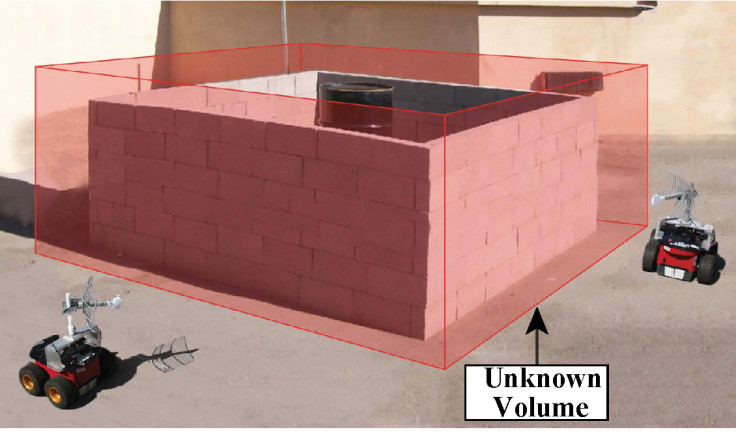X-Ray-Vision Robots Will Use Wi-Fi to See Through Walls

Researchers at the University of California Santa Barbara have developed robots with X-ray vision that can see through solid walls.
The machines are able to accomplish this feat by detecting changes in Wi-Fi signals and it is hoped the technology could be used in search and rescue missions, to monitor people's health and to discover artefacts and remains in archaeological digs.
The robots work in pairs, moving in parallel around an unknown area, with one robot transmitting a Wi-Fi radio signal and the other robot receiving it.
By analysing the strength of the signals using a wave-propagation model with a targeted resolution of 2cm, the robots can see the location and shape of hidden objects behind brick walls within a minute and a half, and can even tell if the object is made of wood, metal or human flesh.
"The problem of extracting information about our environment via wireless transmission is one that my team has been working on for a few years," Yasamin Mostofi, a professor in electrical and computer engineering at the University of California, Santa Barbara, explains in a video about see-through imaging.
"We have proposed a framework based on proper approximated wave models, to capture what goes through the structure, for signal processing to address the size of the unknown space."

The university's research, entitled An Integrated Framework for Obstacle Mapping with See-Through Capabilities using Laser and Wireless Channel Measurements, is detailed in the IEEE Sensors Journal.
Last year, Massachusetts Institute of Technology (MIT) researchers developed Wi-Vi, a similar technology that also makes use of Wi-Fi signals, but it aims to track moving objects and people, rather than trying to view something hidden behind a thick wall.
Also, the MIT solution stays in one place and is too low in resolution to be able to do more than detect movement.
Mostofi's team are now testing the see-through imaging technology out on multiple flying helicopter drones, to see if they can scan a concealed area from the air while transmitting and receiving Wi-Fi signals at the same time.
© Copyright IBTimes 2024. All rights reserved.






